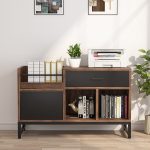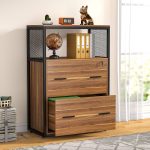Introduction to Filing Cabinets for Office Efficiency
The modern office is a hub of activity, with documents and data at the core of its operations. To manage this vast amount of information, filing cabinets for office use are essential. They provide a structured way to store documents, making them quick to find. Using filing cabinets effectively can greatly enhance office efficiency.
For an office to function smoothly, it is vital to keep things organized. Filing cabinets help achieve this by storing documents in a clear, orderly manner. No more wasting time searching through piles of paper. Everything has its place in a filing cabinet.
Efficiency isn’t just about orderliness. It’s about accessing what you need, when you need it. Filing cabinets designed for office use feature systems that save time. They allow for fast retrieval of documents, thus supporting productivity.
Choosing the right filing cabinets can also impact office workflows. Different types cater to different needs.
Vertical filing cabinets, while space-saving, provide easy front-facing document access. On the other hand, lateral filing cabinets offer wider drawers for greater storage capacity. Depending on the cabinet’s design, documents can be filed front-to-back or side-to-side. This flexibility is key in maximizing office space and efficiency.
Conclusively, filing cabinets are indispensable for an efficient office. They enable staff to file and find documents swiftly, thus boosting overall productivity.
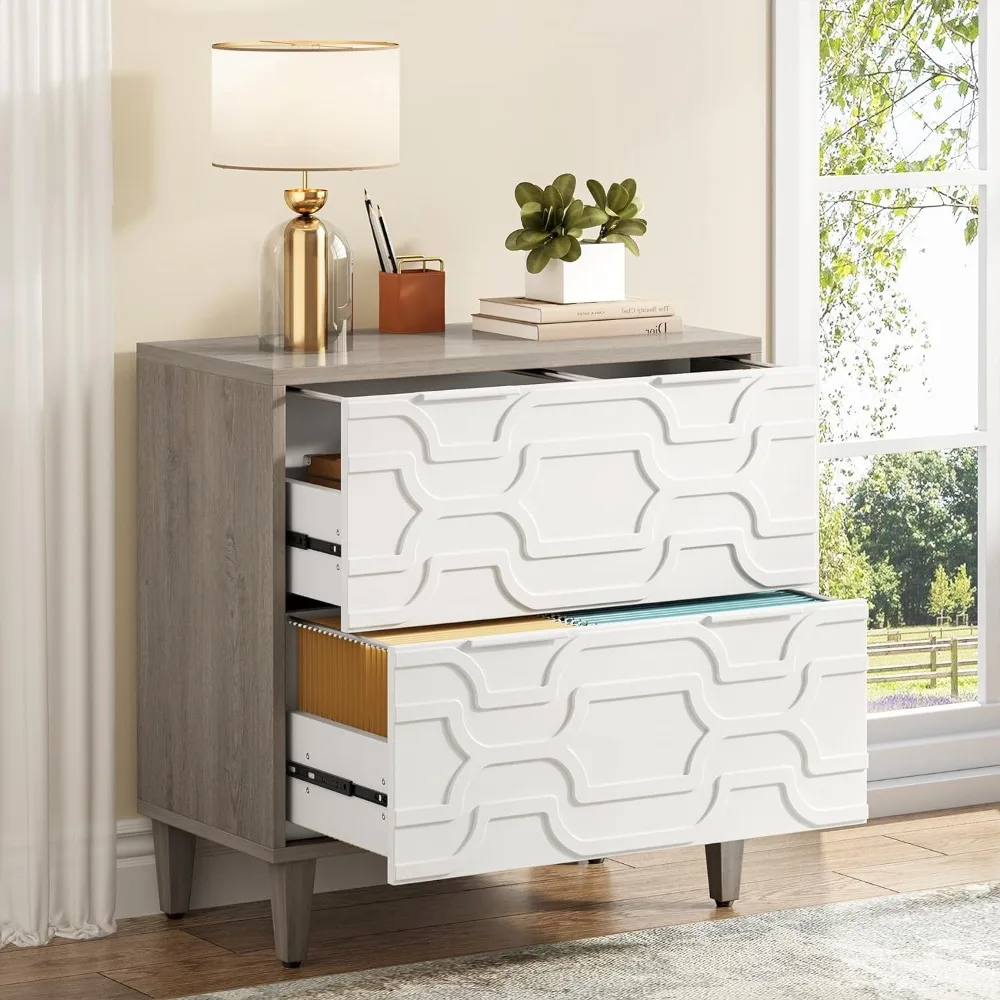
Types of Filing Cabinets
When it comes to organizing an office, choosing the right kind of filing cabinets is crucial. There are two main types that most offices rely on: vertical and lateral filing cabinets. Both serve unique purposes and offer different benefits based on the office’s needs.
Vertical Filing Cabinets
Vertical filing cabinets are ideal for offices with limited space. These cabinets typically come with two to four drawers. They can store files, documents, and letters in a front-facing direction. The drawers have significant storage capacity for their size. Vertical cabinets occupy less floor space. This makes them a smart choice for smaller offices.
Lateral Filing Cabinets
Lateral filing cabinets provide a wider drawer for better storage capacity. They can hold 25% more than vertical cabinets. These cabinets allow you to arrange files front to back or side to side. This makes it easier to customize your storage. Both legal and letter size files fit in the same drawer. Lateral cabinets help you see and access files quickly. This type is well-suited for offices with more floor space.
Selecting between vertical and lateral filing cabinets for office use depends on your space, storage needs, and workflow. Keep these factors in mind to enhance office efficiency and productivity.
Key Considerations When Choosing Filing Cabinets
Space Constraints and Cabinet Dimensions
When picking filing cabinets for office spaces, size matters. Measure your available space before you decide. Ensure cabinets will fit without cramping your workspace. Vertical cabinets save floor space. Lateral ones need more room but offer more storage.
Storage Capacity and Organization
Storage needs vary by office. Consider the volume of files you need to store. Vertical cabinets are suitable for fewer, taller stacks. Lateral cabinets can hold wider items and more files. Good organization features, like label holders, can help locate files faster.
Quality and Durability
Quality is key for long-term use. Opt for metal filing cabinets. They are sturdy and withstand daily office wear and tear. Check for tough construction and smooth drawer mechanisms. This ensures longevity and ease of use.
Security Features: Lock and Key Systems
Security is crucial for protecting sensitive documents. Look for cabinets with reliable lock and key systems. This keeps confidential files secure. Some cabinets even offer advanced locking options, such as digital locks.
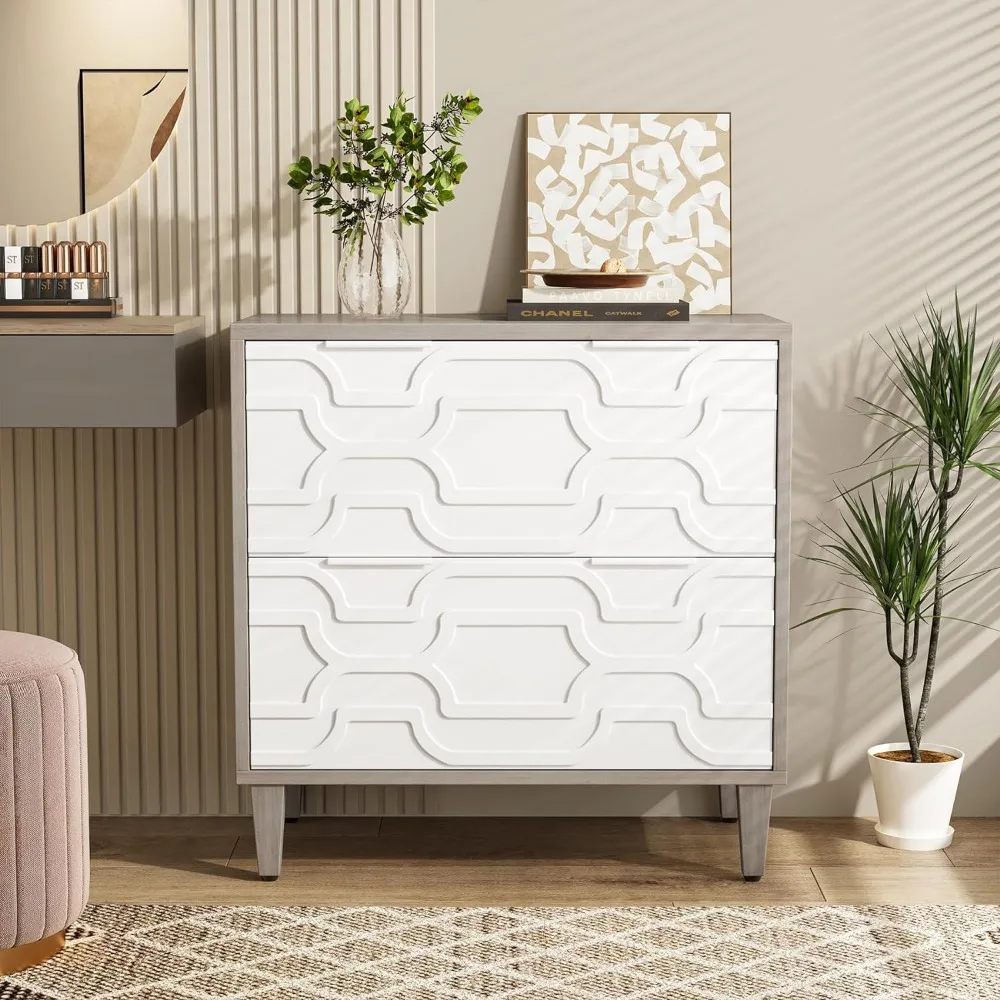
The Importance of Design and Aesthetics in Office Filing Cabinets
When selecting filing cabinets for office environments, design and aesthetics play a significant role. A well-designed filing cabinet not only stores documents but also contributes to the overall look and feel of the office. Here’s why the design should be a key consideration:
- Reflecting Company Image: The design of filing cabinets can reflect the company’s professionalism and attention to detail. Sleek, modern designs can convey a forward-thinking approach, while traditional styles might suggest stability and reliability.
- Enhancing Workplace Ambience: Appealing filing cabinets can enhance the visual appeal of the office. They can complement the interior decor and create a more pleasant workspace, which can boost employee morale and productivity.
- Facilitating Brand Consistency: Consistent design across office furniture, including filing cabinets, helps to maintain brand consistency. This is important for businesses that value a cohesive brand image throughout their physical spaces.
- Driving Employee Efficiency: Well-designed filing cabinets that are easy to use and access can drive efficiency. If employees find their filing systems intuitive and aesthetically pleasing, they may be more inclined to use them effectively.
Overall, while the primary function of filing cabinets is to organize and secure documents, overlooking the design aspects can be a missed opportunity to contribute positively to the office environment. Therefore, when shopping for filing cabinets for office use, consider both form and function to make the best choice for your workplace.
Maximizing Office Space with the Right Cabinet Selection
Finding the perfect filing cabinet is crucial for a tidy, efficient workspace. Smaller offices can benefit greatly from vertical filing cabinets. They use less floor space and still hold a good amount of files. These cabinets can fit neatly in tight corners or small alcoves.
For bigger offices with more floor space, lateral filing cabinets are a smart move. They offer wide drawers, storing a larger volume of documents. They make it easy to see and reach files quickly. Plus, they can handle different sizes of files in the same drawer, from legal to letter. This can be a game changer for offices that deal with diverse document types.
Choosing the right filing cabinets for office spaces is about balancing size, storage needs, and office layout. It’s not just about fitting a cabinet into a space. It’s about making the most of that space. A well-chosen cabinet can make a huge difference. It can keep your office looking neat and running smoothly.
Always think about how the cabinets will work with your workflow. Make sure they’re where they need to be for easy access. This way, they’ll help, not hinder, productivity. And remember, a mix of both types of filing cabinets might be the best solution. It gives you flexibility to store various file sizes in the most efficient way possible.
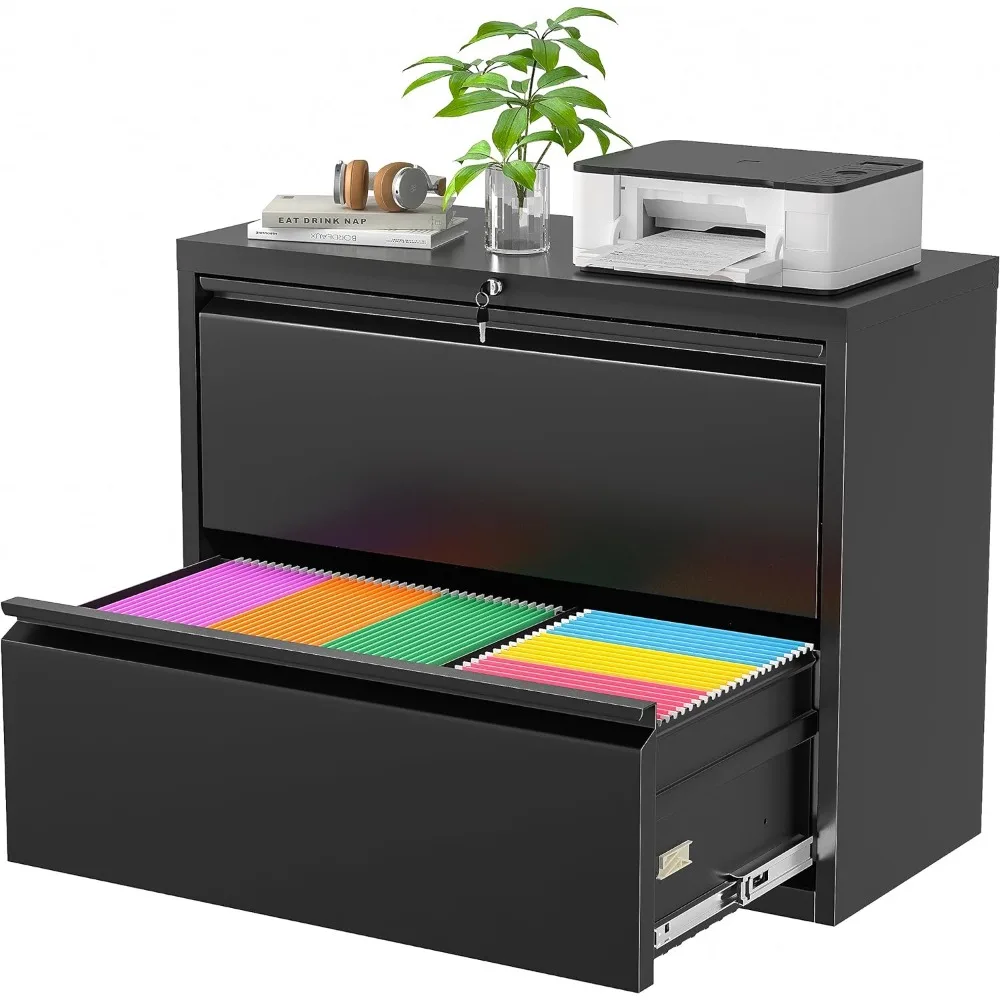
The Role of Filing Cabinets in Document Security
In any office, document security is a top concern. Filing cabinets play a crucial role in keeping sensitive information safe. Here’s how they contribute to document security:
- Lockable Drawers: Most metal filing cabinets come with lock and key systems. This allows for the safekeeping of confidential documents. Only authorized personnel can access them.
- Sturdy Materials: The durable metal construction provides a physical barrier against unauthorized access. It prevents tampering and protects documents from damage.
- Organized Storage: By keeping files well-organized, it lowers the risk of important documents being misplaced or falling into the wrong hands.
- Privacy Protection: Filing cabinets with dividers or frosted fronts prevent prying eyes. Only the intended users can view sensitive materials.
- Fire Resistance: Some metal filing cabinets are designed to be fire-resistant. This adds an additional layer of protection for critical documents during emergencies.
Selecting filing cabinets for office use with these security features is a smart move. It ensures that your documents are not only tidy but also secure. For comprehensive security, consider cabinets that offer advanced locking systems, such as digital locks or combination pads. Enhanced security options give peace of mind that your office’s sensitive information is protected at all times.
Frequently Asked Questions About Office Filing Cabinets
When selecting filing cabinets for office use, several common questions arise. Here are the answers to some of the most frequently asked questions to aid in your decision-making process:
What Size Filing Cabinet Should I Choose?
Assess your office space and storage needs. For small spaces, opt for vertical cabinets. They take up less room. Lateral cabinets are better if you have more floor space and need to store larger volumes of files.
How Can I Ensure My Files Stay Secure?
Choose filing cabinets with lock and key systems. They secure sensitive documents. Consider cabinets with advanced locking mechanisms like digital codes for extra security.
Are There Different Styles of Filing Cabinets?
Yes, there are many styles. From sleek, modern designs to more traditional looks. Pick one that matches your office decor and reflects your company’s image.
Can I Organize Different Types of Files in One Cabinet?
Lateral filing cabinets often allow for varied file sizes in one drawer. You can organize both legal and letter size documents together. Look for cabinets with adjustable file bars or inserts.
What Materials Are Best for Filing Cabinets?
Metal filing cabinets are durable and long-lasting. They are ideal for high-use office environments. Choose quality metal for strength and resilience.
How Do I Maintain My Filing Cabinets?
Keep them clean with a damp cloth. Don’t use abrasive cleaners. Regularly check and maintain the drawer mechanism to ensure smooth operation.
Can Filing Cabinets Be Fire-Resistant?
Some cabinets are designed to be fire-resistant, offering added protection for critical documents. Check the cabinet specifications if this feature is important to you.
Understanding these aspects will help you select the best filing cabinets for office efficiency and security. Consider your space, filing needs, and design preferences to make the right choice.
